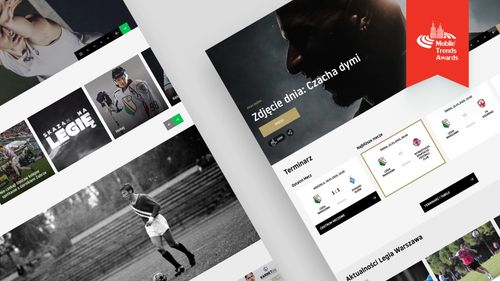How to Start the Process of Adapting Your Business to the New Reality

Michał Wapiński

The COVID-19 pandemic has created a new reality that will have a long-lasting effect on us. There are things that will never go back to what we already knew. You must adapt if you want to stay in the game. Nowadays is a time of huge uncertainty, and leaders must decide in which direction to go, find answers to the critical questions, evaluate options, and develop a new efficient business model.
For quite a long time hero/dot has been cooperating with TAK Innovation founder that offers creative workshops, which help to solve complex problems, based on the process of Design Thinking. He has already prepared a bunch of successful workshops for companies such as Nike, Deutsche Telekom, Knauf, Noclegi, and many more.
Recently, TAK Innovation prepared a process of how to find opportunities for growth in the post-pandemic economy and pivot your business to match the changes caused by the current crisis. Let’s check the first steps that should be taken to adapt to this new business situation.
ADAPTING TO NEW BUSINESS [POST-COVID] REALITY
 We can guide you through a process, where you and your team will pivot and find opportunities.
We can guide you through a process, where you and your team will pivot and find opportunities.
WHY TO USE “DESIGN THINKING” METHODOLOGY?
Primarily, Design Thinking is a creative, iterative process that seeks to understand users, challenge assumptions, redefine problems, and create innovative solutions to prototype and test. It is a complex and comprehensive methodology that can be understood on three different levels.
First of all, it is a set of tools that include many methods such as contextual interviews, journey mapping, personas, brainwriting, and paper prototyping. Secondly, Design Thinking might be treated as a process of iterative cycle consisting of defining needs and creating solutions. Last but not least, it is perceived as a mindset which leads to being highly empathetic and taking a creative approach to the reality that surrounds us.
Why is the idea of Design Thinking so important and efficient when finding opportunities, pivoting and adapting to new business realities? It tackles ill-defined or wicked problems because the process reframes them in human-centric ways, and allows companies to focus on what’s essential for users.
Design Thinking offers unconventional ways to think outside the box and go a bit deeper into problem-solving. It helps carry out the right kind of research, create prototypes and test out products and services to uncover new ways to meet users’ needs. It has become increasingly popular over the last few decades because it was critical to the success of many high-profile, global organisations and companies such as Apple, Airbnb, or Google.
FIRST STEP TO PIVOTING YOUR BUSINESS: MAP OUT YOUR CURRENT VALUE MODEL
As a business leader, you need to always remember about looking from a helicopter view to choose the best long-term strategy. Considering what assets you have, where your financial sources come from and making sure you know your numbers indicating how long you can survive on the current business model is invariably crucial.
Current Value Model comes from the simplified version of the Business Model Canvas. It will help you to redefine your whole business model if necessary and repurpose your assets to most efficiently meet the new post-COVID requirements. It consists of four inseparable components that will let you comprehensively look at your company and decide which way to take to be the winner in the after-pandemic reality.
Take the first step and describe a simplified version of your current business model in the following four categories:
1. VALUE PROPOSITION
Value proposition is a summary of how your product or service benefits your customers. It is a promise of value that is aimed to be delivered to your customers. Predominantly, it presents the most compelling reasons why a prospective buyer should become a customer and highlights a benefit or feature that sets you apart from every other company in the market.
In order to correctly define your value proposition, you should answer the following questions:
- What value do you provide and what needs do you address?
- What problem do you solve for your customer?
- How do you make your customer’s life better?
- What is the main aspect of your service or product?
Value proposition is a statement that should contain the relevance, value and difference. It should state your customers’ needs and explain how your product solves their problems and improves situations. It should deliver specific benefits against their needs and inform the customer why they should choose you over the competition.
That’s why you should mainly focus on capturing the target objective, which is revealed when you’re determining your customers’ immediate needs. What’s more, you should aim to present a unique selling proposition. Explain what value you can provide through your products/services. This is the unique solution that you’re selling to your audience. Adequately prepared, the value proposition can give your business a massive advantage over your competitors.
For instance, recently many big sports clubs, such as PSG or Legia Warszawa, decided to significantly change the value they provide to their supporters. Currently, not only do they inform about the traditional football games that will come back soon, but they also put an emphasis on the Esports competition. Redefining their value offering opportunities allowed them to temporarily transfer their fan's 'hunger for emotions” to Esports. This increased their Fan Base and opened up new possibilities that can be positively used in the future.
2. TARGET GROUP
Target group is the specific category of people you want to reach with your product or service. They are the people who are most likely to use and buy your products or services and have some common characteristics that unite them. The more clearly you define your target group, the better you can understand the problem that your product or service is solving.
Consider the LEGO® example, where parents are willing to make their children develop and spend some time independently. There is a difference between the buyer (a parent) and the user (a child) and needs of both sides must be satisfied to achieve the best possible results.
In order to correctly define your target group, you should answer the following questions:
- Who gets the value you provide?
- Who is using your products?
- Who is buying your products?
- Who are the other involved stakeholders?
- Are there any new possible target markets?
Try to be as specific as possible. By doing it, you will be able to adjust your product or service effectively. Nevertheless, remember that people who are not included in your target market can still buy from you – they just don’t need to necessarily be your top focus when it comes to crafting your marketing strategy. Most importantly, remember that your target market should be based on audience research rather than a gut feeling.A good example here is OpenTable, a company that used to be a restaurant booking platform that thanks to redefining their target group eventually partially switched to time slot reservations for retail sellers and supermarkets.
3. VALUE DISTRIBUTION
Value distribution or delivery refers to the ways you take to provide the products or services to your customers. List all the stages before and after they purchase your product or service. Think of all off- and on-line channels you interact with your customers. Look for the ways to reduce the time to value, and the client effort required, through product or service design, support enhancements, implementation and training, and delivery improvements. Check if, in the case of post-COVID business situation, you shouldn’t change the product delivery methods. There are plenty of new opportunities such as drive-thru, telephone sales, or taxi delivery. For instance, restaurants recently needed to change their value distribution in order to keep working. The majority of them decided to focus on the high-quality of food deliveries to make a positive impression on their customers.
In order to correctly define your way to distribute value, you should answer the following questions:
- How do you deliver the value?
- How do you provide value to your customers?
Whether you deliver value in the form of a service or a product, there are things you can do to enhance the customer experience of realising value. An independent review and assessment can provide valuable insight and ideas that you may not have identified or considered. It may also help you to evaluate and prioritise ideas that are on your to-do list.
4. REVENUE MODEL
Revenue model is a framework for generating financial income. It’s closely related to monetization, which is the process of converting a product into money. When a customer makes a purchase, they perceive the product as valuable. One of the crucial steps in creating and monetizing customer value is picking specific revenue models, from which we very often distinguish between ad-based, transactional, subscription, web sales, direct sales, retail sales, or freemium.
In order to correctly define your revenue model, you should answer the following questions:
- How do you monetize the value you provide?
- What is the model of revenue?
- How often and when do your customers pay?
A very interesting example here is a traditional grocery in Greece, Sklavenitis, that used to cultivate the idea of old-fashion shopping where you could pay only with cash and receive the products to hand. However, due to the worldwide pandemic they have enabled alternative delivery channels and payment methods which gave them additional marketing power to share that even they can change their approach when the world needs it.
CONCLUSION
Mapping out your current value model is just the first out of five steps in the process of adapting to the post-COVID Business situation offered by TAK Innovation. This will allow you to decide in which area your pivot should be made. The next four steps refer to analysing your assets and changing behaviour of your consumers regarding COVID-19. Then, organising a brainstorming in order to select the best ideas, eventually, prototype and test them. If you want to learn more about the next steps of pivoting your business, sign up to the TAK Newsletter here. If you want to take part in remote workshops for your company, fill the contact form on TAK’s website.
The example of what first part of remote workshops may look like.
Need expert assistance with your digital project?
Recent from Michał Wapiński

